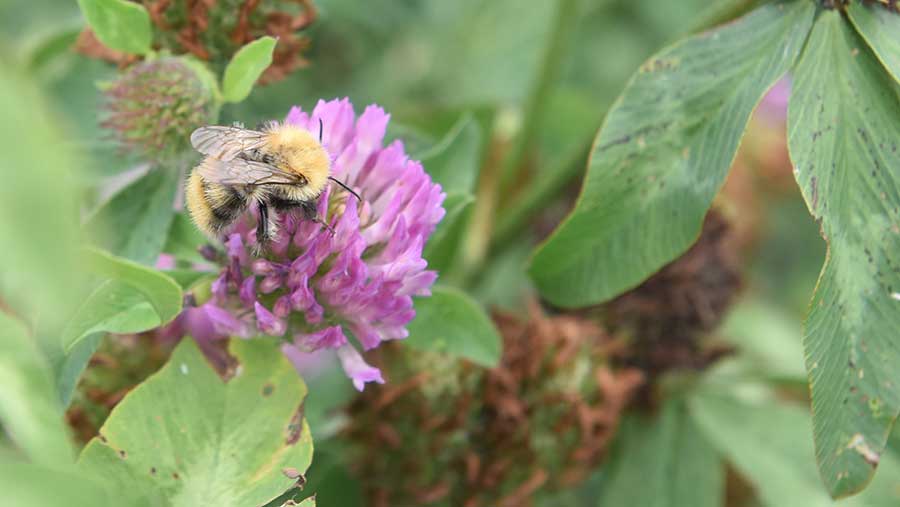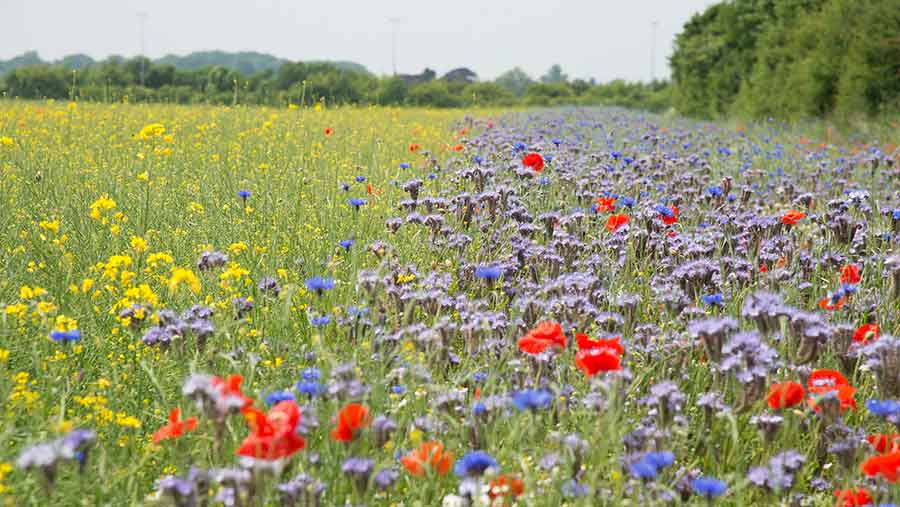How encouraging bees can lift arable crop yields by a third
 © Mark Sanderson
© Mark Sanderson Planting and managing flower-rich mixes to support wild pollinators can bring an economic benefit to arable businesses by raising crop performance.
Research conducted over six years by the Centre for Ecology & Hydrology has shown that by encouraging pollinating insects such as bees, farmers can make uncropped and cropped areas work together to improve crop yields and quality.
Providing they choose the right measures for wildlife, put them in the right place and manage them in the right way, there will be more than an environmental benefit, experts agree.
See also: Plant wildflowers to save neonics and bees, says NFU
“Get it right and you will see a return,” says Jon Storkey, a plant ecologist at Rothamsted Research. “Biodiversity is more than a nice feeling – it is actually supporting production and giving something back.”
Long-term benefits
This means that any land taken out of production to provide food, refuge and a breeding habitat for insects is more than compensated for, making the introduction of environmental measures a strategic decision, he continues.
“It’s not an overnight benefit. But by five years, the investment will have paid off.”
He points to the Hillesden experiment, which is now in its thirteenth year and takes place on a 1,000ha commercial farm with an autumn-sown crop rotation.
“Three different management regimes have been compared at Hillesden, taking out varying amounts of land, from 0% to 3% and 8%, to create habitat for pollinators and other wildlife.”
Despite the loss of some crop land, a positive effect on crop yield was seen from the ecosystem services provided by the right habitats, with insect-pollinated crops such as beans showing the greatest yield improvement.
“Some crops have seen as much as a 35% yield increase. It has shown why the design of pollinator habitats is so important and how they can contribute to the farm’s productivity.”
Suitable habitat has to provide pollen and nectar resources, as well as refuge and breeding habitat, explains Dr Storkey.
“We need abundance and diversity of these,” he stresses. “While landscape features will provide some of what is required, flower rich margins, tussocky grass and some bare earth patches are also needed.”
Top tips on growing wildlife habitats
- Aim to establish around five evenly spaced wildflower patches per 100ha
- Sow wildflower habitat in sunny, sheltered locations in spring or autumn
- Broadcast the seed onto the surface of a good quality seed-bed and roll
- Cutting in the first year is vital for successful establishment and will control excessive growth of weeds
- Remove the cuttings where possible to prevent them smothering flowers
- Good management in the following years will increase the number of flowers for pollinators
- Once established, consider cutting habitats on a rotational basis to prolong late season flowering and leave tall grass for over-wintering

© Mark Sanderson
Reduced-cost seed
Syngenta is supporting the introduction of pollen and nectar mixes on farms which can’t commit to being in an agri-environment scheme.
Two seed mixes – the Operation Pollinator annual wildflower mix and the spring-sown Bees ‘n’ Seeds mix are available to growers at a reduced cost of £35/ha and £50/ha respectively – along with guidelines and agronomy advice to ensure success.
Both can play an important role as part of a vibrant, healthy landscape on the farm, by providing pollen and nectar, seed and canopy cover, supporting the Campaign for the Farmed Environment (CFE’s) voluntary environmental management measures.
Importance of pollinators
Pollination is essential for food production and farming needs a diversity of pollinators, stresses Dr Storkey.
“We know that the landscape is getting less diverse and that wild pollinators have been in decline,” he says.
The causes of this are complex, he adds. “There’s a whole range of things putting pressure on pollinators – from climate change to loss of habitat, forage quality to pathogens.
“They are all working in the same direction as far as pollinator survival is concerned.”
Wild pollinators are as important as honeybees, he notes.
“There are only enough honeybees to pollinate 25% of crops, so increasing pollinator diversity is an insurance policy.”
The experts were speaking at an event organised by the Campaign for the Farmed Environment, held in conjunction with Kings and Syngenta, on the Royal Agricultural University Farms, near Cirencester.

